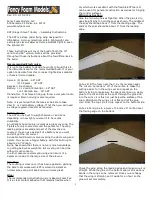Reviews:
No comments
Related manuals for Kona 2

SST
Brand: Fancy Foam Models Pages: 3

BLACKLIGHT S
Brand: U-Turn Pages: 50

Q2 Lite
Brand: Quickie Pages: 84

212 SOLO
Brand: Atec Pages: 36

Wipline 4000
Brand: Wipaire Pages: 50

Blaze
Brand: MAC PARA Pages: 40

ZORRO 22
Brand: SKY PARAGLIDERS Pages: 56

RV-7A
Brand: Van's Aircraft Pages: 181

Rush 4
Brand: Ozone Pages: 62

S-7LS Courier
Brand: Rans Pages: 82

XS Monowheel Motorglider
Brand: Europa Aircraft Pages: 96

Cessna CITATION XLS 5512
Brand: Textron Pages: 31

Thango XC3
Brand: UP Pages: 52

Explorer2 Dyneema Riser
Brand: Gin Gliders Pages: 10

Safari Passenger
Brand: Gin Gliders Pages: 13

ZULU II
Brand: Gin Pages: 18

FLUID 2010
Brand: Gin Pages: 19

NAZCA II
Brand: Gin Pages: 23

















